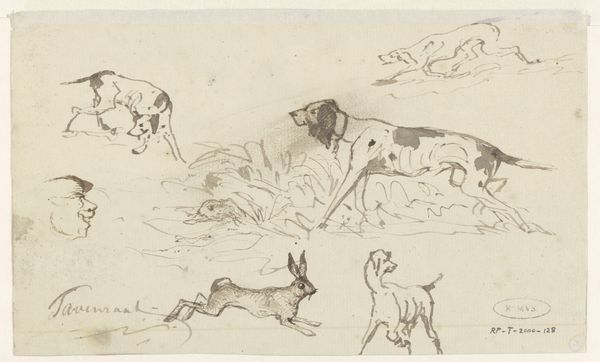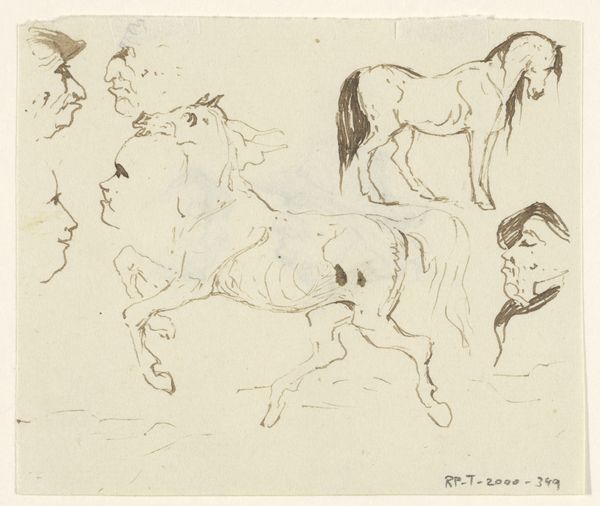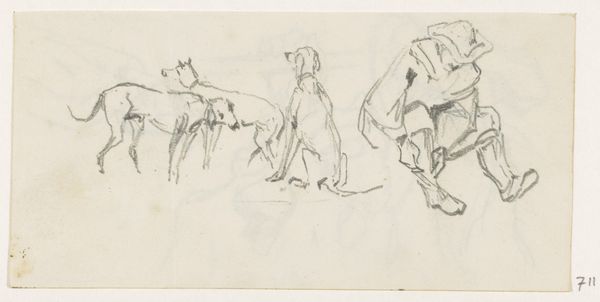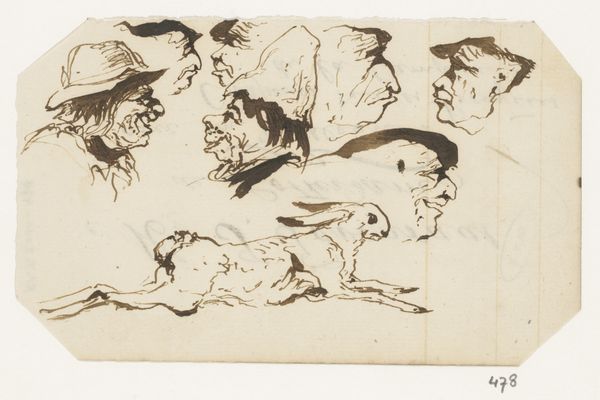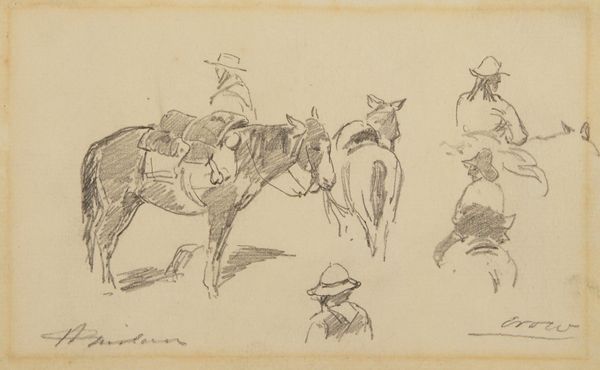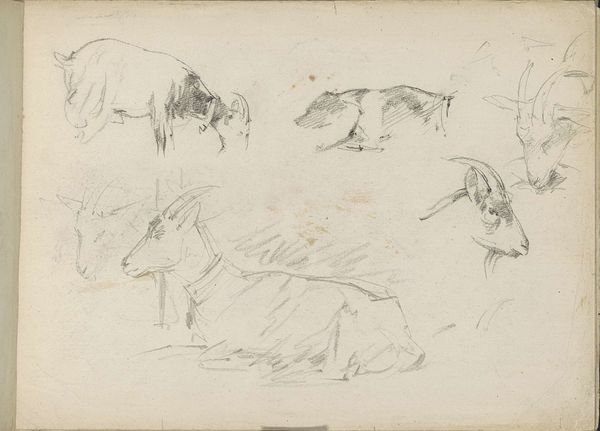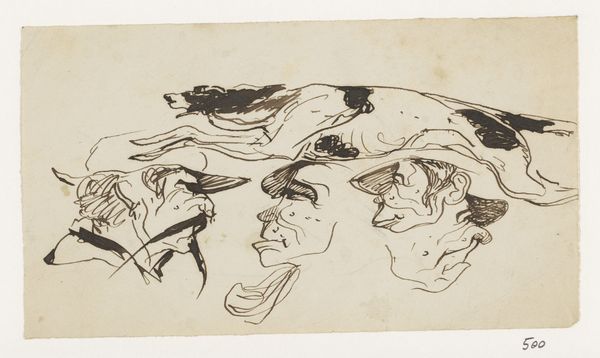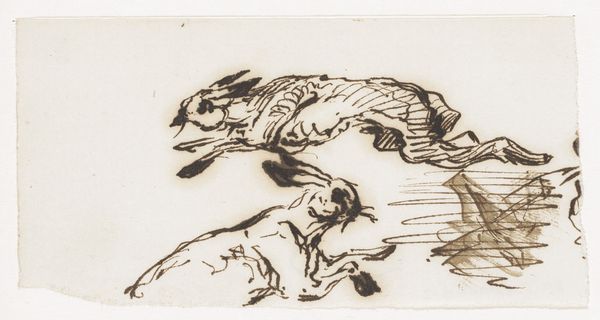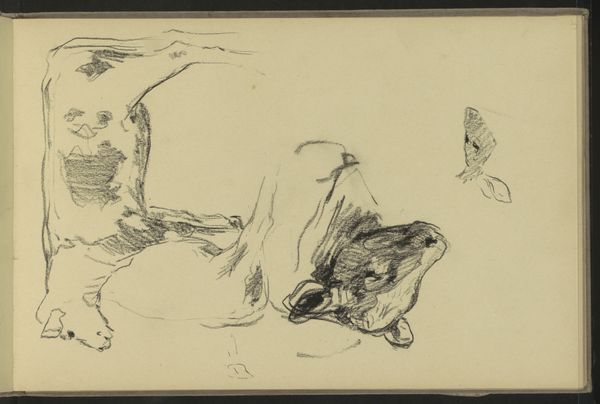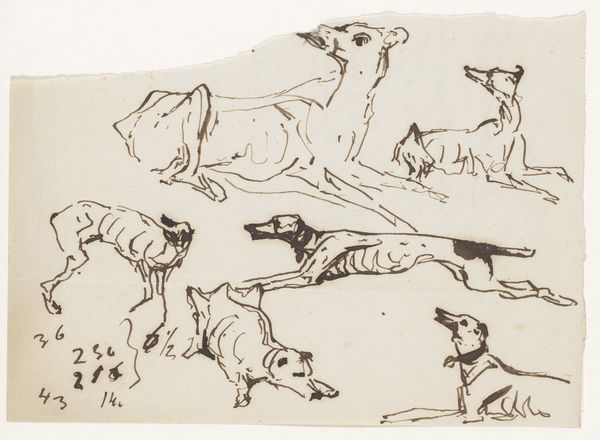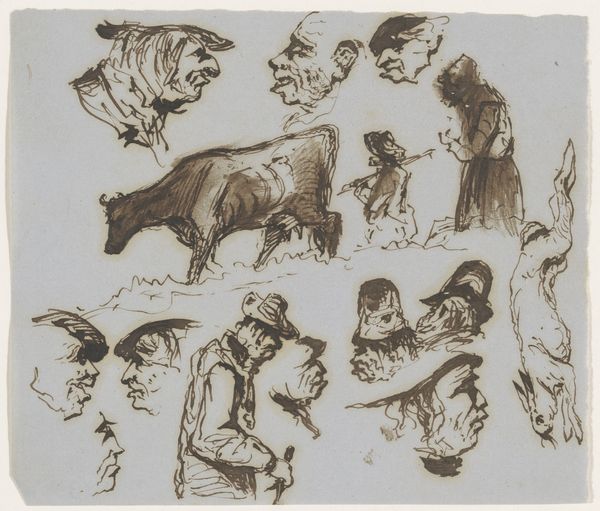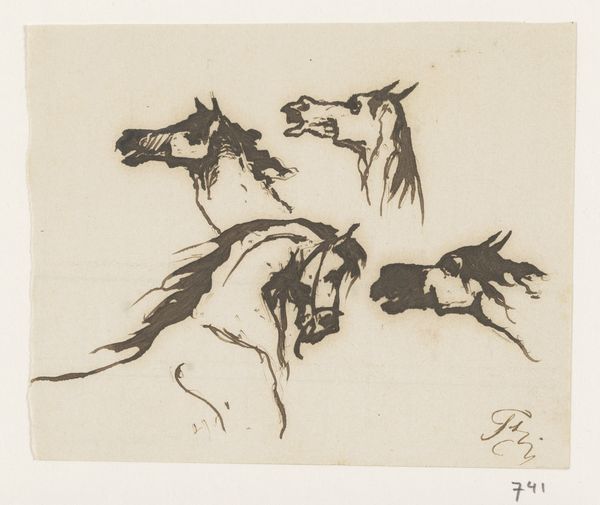
Schetsen van paarden, koppen en een man leunend op een stok 1840 - 1880
0:00
0:00
drawing, ink, pen
#
portrait
#
drawing
#
ink drawing
#
pen sketch
#
pencil sketch
#
figuration
#
ink
#
pen
#
genre-painting
#
academic-art
Dimensions: height 73 mm, width 225 mm
Copyright: Rijks Museum: Open Domain
Editor: So, here we have "Sketches of Horses, Heads, and a Man Leaning on a Stick" by Johannes Tavenraat, made sometime between 1840 and 1880 using pen and ink. It strikes me as a really intimate glimpse into the artist's process – like looking over their shoulder. What do you see in this piece, especially beyond the obvious subject matter? Curator: Beyond the surface, I see a snapshot of 19th-century social dynamics. Consider the subjects Tavenraat chose to depict: working-class figures, perhaps, captured with the same attention as the horses, which were vital to labor and transportation at the time. Notice how the gazes of the figures are directed. Where do they seem to focus, and what could that suggest about the relationship between the artist, the subjects, and the viewer? Editor: That's fascinating! I hadn't really thought about it in terms of class. I was just thinking about the horses as being… well, horses. Now, I'm considering the social function of art at the time, maybe the artist intended to highlight their importance, even advocate for them. Is it reading too much into a sketch? Curator: Not at all. Remember, even sketches can be political. Whose stories are deemed worthy of representation is a reflection of power. And thinking about how the means of representation - pen and ink - was available and how that speaks to Tavenraat's social location can all enrich your understanding of that historical moment. So, what does looking at these figures and animals together tell us about Dutch society in the mid-19th century? Editor: Wow, I’m beginning to realize just how much context matters! The drawing becomes a cultural document, reflecting societal values. I'll never look at a simple sketch the same way again. Curator: Exactly! It is also about who gets remembered and whose stories remain hidden, shaping our understanding of the past.
Comments
No comments
Be the first to comment and join the conversation on the ultimate creative platform.
